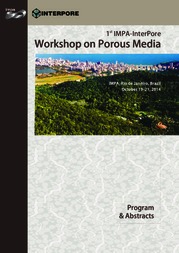How to predict soil water holding capacity using physically based equations?
How to predict soil water holding capacity using physically based equations?
Author(s): TEIXEIRA, W.
Summary: The soil surface and porosity govern the capacity of soil to hold water. In soil science, many functions were developed to estimate parameters of equations to describe soil water retention and soil hydraulic properties. These functions were created using statistical techniques based in soil properties parameters less laborious and cheaply obtained than the direct measurements of soil hydraulic parameters. These functions are called pedotransfer functions (PTF) and fill the gap between the available soil data and the properties required for modeling soil water fluxes. The physically based equations approach to obtain functions of water retention and hydraulic conductivity of the porous media (soils) may be advantageous, as the predictors will not be select by statistical procedures and be strongly influenced by the available data base and technique used, moreover the predictors will have also a physical meaning. Examples of physically based equations to predict soil water content in function of dielectric conductivity in soils is given and the demand of physically based equation to predict soil water hold capacity and soil hydraulic conductivity is addressed.
Publication year: 2014
Types of publication: Abstract in annals or event proceedings
Unit: Embrapa Soils
Observation
Some of Embrapa's publications are published as ePub files. To read them, use or download one of the following free software options to your computer or mobile device. Android: Google Play Books; IOS: iBooks; Windows and Linux: Calibre.
Access other publications
Access the Agricultural Research Database (BDPA) to consult Embrapa's full library collection and records.
Visit Embrapa Bookstore to purchase books and other publications sold by Embrapa.

